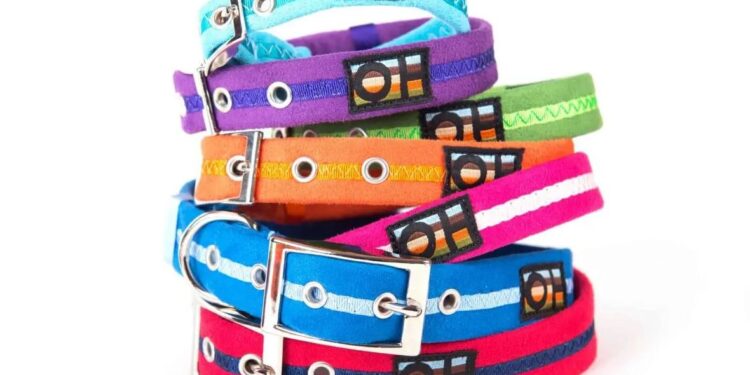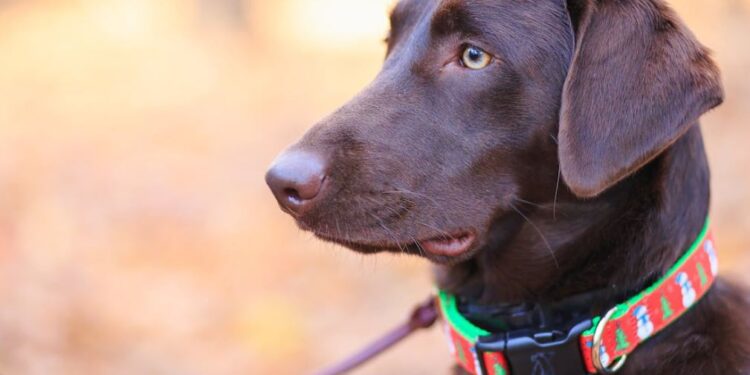Selecting the suitable collar for your dog is top to ensure their comfort, safety, and overall well-being. With so many choices, your perfect match is out there! It just takes a little exploration. But by carefully valuing factors including size, breed, behavior, and lifestyle, you can identify the optimal collar that caters to your canine companion’s requirements. This article will help you discover your dog’s ideal collar and unlock comfort, safety, and happy walks.
Consider Your Dog’s Size and Breed
When exploring collar options, consulting a dog collar size chart can provide valuable guidance in selecting the perfect fit for your canine companion. Big dogs like German Shepherds and Great Danes need strong, wide collars to handle their mass. Equally, smaller breeds, like Chihuahuas or Pomeranians, may benefit from lighter and narrower collars to ensure their comfort.
Moreover, specific breeds possess unique material features that influence their collar requirements. For instance, sight hounds like Greyhounds and Whippets boast slender necks and heads, executing them more subject to slipping out of square buckle collars. In such instances, martingale collars, which gently tighten upon tension, offer improved security.
Evaluate Your Dog’s Behavior
A complete understanding of your dog’s behavior is essential when choosing an appropriate collar. Dogs prone to pulling, especially larger breeds, can find relief with harnesses or head collars, issuing pressure evenly and reducing strain on their neck and trachea. Similarly, dogs inclined to escape may benefit from martingale or buckle collars with secure closures to prevent chance slips. Equally, dogs with a peaceful character may find standard buckle collars suitable, provided they fit snugly without causing discomfort. By carefully evaluating your dog’s behavior and requirements, you can select the ideal collar to ensure their safety and comfort during outings.
Consider Your Dog’s Lifestyle
Customizing the collar selection to match your dog’s lifestyle is essential for their comfort and safety. Active dogs that increase on outdoor pursuits like hiking or running require tough, water-resistant collars capable of withstanding rough terrain. Nylon or leather collars are favored for their durability and low-maintenance attributes. Additionally, reflective or LED collars enhance visibility during nighttime excursions, promoting your dog’s security. For water enthusiasts, waterproof collars are essential to prevent moisture seepage and maintain collar integrity over time. Investing in premium collars crafted from these materials ensures your dog’s enjoyment of outdoor activities while ranking their safety and well-being.
Choose the Right Material

Collars are available in a many of materials, each boasting different advantages. Nylon collars, lightweight and affordable, offer flexibility with a plethora of colors and designs to suit various tastes. Say goodbye to muddy messes! These collars are a breeze to clean, and perfect for active dogs. Equally, leather collars exude strength and style, softening over time for enhanced comfort. However, they demand broken maintenance to prevent deterioration. Neoprene collars provide a soft, comfortable feel against the skin, while reflective materials ensure visibility during nighttime adventures.
Ensure Proper Fit
Ensuring a proper fit is top regardless of the collar type selected. A snug fit prevents chafing and potential breathing restrictions, whereas a loose fit may lead to accidental slips or escapes. For ultimate comfort, measure your dog’s neck with soft tape, leaving space for two fingers to fit closely between the collar and the neck. Regularly assess the fit, especially during growth shots or weight variations and adjust as necessary for optimal comfort and security.
Consult with a Professional
In instances of uncertainty consult a qualified professional such as a veterinarian, certified dog trainer, or knowledgeable pet store staff. Their expertise enables them to offer personalized approvals specific to your dog’s needs, assuring the selection of a suitable collar. Additionally, they can offer insights on fitting techniques and collar adjustments to optimize comfort and safety. Investing time and effort in selecting the right collar not only enhances your dog’s quality of life but also strengthens the bond between you and your mate.
Conclusion
Choosing the suitable collar for your dog demands thoughtful negotiation like size, breed, behavior, lifestyle, material, and fit. By exactly considering these factors and seeking expert guidance as necessary, you can guarantee your dog’s comfort, safety, and fashionable appearance in their new collar.




